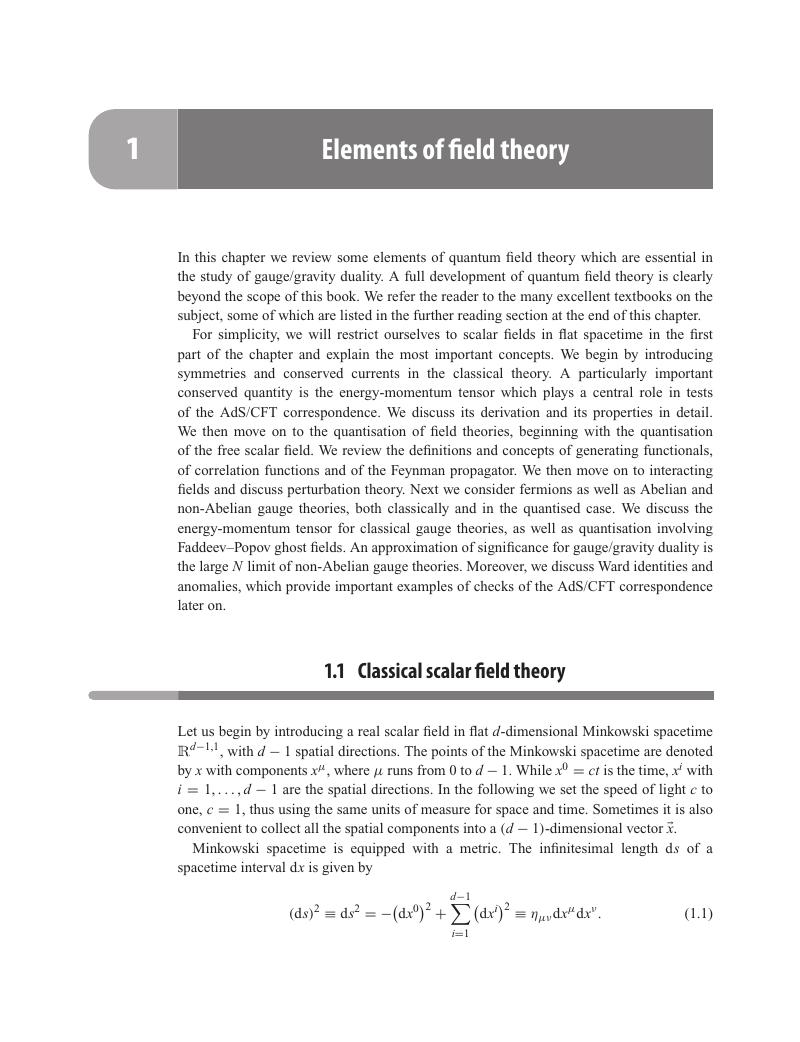Book contents
- Frontmatter
- Contents
- Preface
- Acknowledgements
- Part I Prerequisites
- 1 Elements of field theory
- 2 Elements of gravity
- 3 Symmetries in quantum field theory
- 4 Introduction to superstring theory
- Part II Gauge/Gravity Duality
- Part III Applications
- Appendix A Grassmann numbers
- Appendix B Lie algebras and superalgebras
- Appendix C Conventions
- Index
- References
1 - Elements of field theory
from Part I - Prerequisites
Published online by Cambridge University Press: 05 May 2015
- Frontmatter
- Contents
- Preface
- Acknowledgements
- Part I Prerequisites
- 1 Elements of field theory
- 2 Elements of gravity
- 3 Symmetries in quantum field theory
- 4 Introduction to superstring theory
- Part II Gauge/Gravity Duality
- Part III Applications
- Appendix A Grassmann numbers
- Appendix B Lie algebras and superalgebras
- Appendix C Conventions
- Index
- References
Summary

- Type
- Chapter
- Information
- Gauge/Gravity DualityFoundations and Applications, pp. 3 - 49Publisher: Cambridge University PressPrint publication year: 2015



